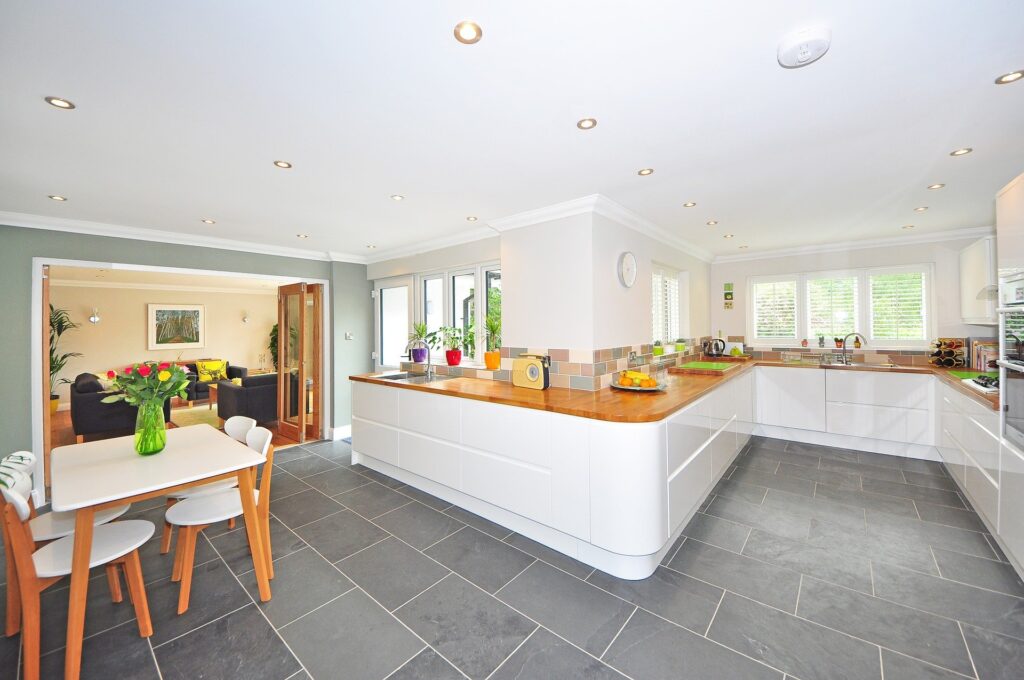Choosing the suitable color scheme for your kitchen
We are all different, and, accordingly, our tastes may not always coincide. However, there are specific rules when choosing a color scheme for a particular room at home. And here, you can’t argue. So, it has been scientifically proven that each color affects the psychological state of a person in its way. Bathroom supply store New Bathroom Style knows should be taken into account when decorating a kitchen interior.
Appetite depends on the color!
Nutritionists say that different colors have different effects on a person’s appetite and taste. Some colors are more active in encouraging food intake – these are the most “appetizing” and bright colors: red, yellow, orange, bright green. The fact is that they are associated with ripe fruits and berries. Bright green hues give the brain a signal that the food is fresh. Plus, green foods are packed with healthy vitamins. That is why, at the sight of such flowers, the human body subconsciously tunes in to the consumption of tasty and healthy food, which increases the production of gastric juice.
If you struggle with being overweight or just trying not to overeat while dieting, you need to be careful with such shades. The best option, in this case, is to use blue, black, and swamp kitchen colors. Such dyes are associated with spoiled food, which means that the appetite decreases. The most sickening kitchen design is the combination of monochrome colors: gray, black, and white.
german kitchen are the most neutral – they do not affect appetite in any way. In this case, it is essential to use other shades in combination with white since different colors are most noticeable on a white background. Accordingly, for those who are struggling with excess weight, it is best to use blue or dark green paired with white. If you need to increase appetite, then, as you might have guessed, you need to use bright and warm shades. In this case, you can safely use in the design of your kitchen, for example, wall stickers in the form of fruits.
Choice of color depending on lighting
When choosing a kitchen color in kitchens or bathrooms showrooms near me you need to take into account the level of natural light.
Kitchens located on the north side lack natural light, so the color of the furniture should be one that can reflect the natural color – these are yellow, white, pink, blue, cream, light green, etc. The lighter the color, the better its reflectivity.
If your kitchen faces south, then there should be no problems with lighting. On the contrary, there can be too much light. You can use light-absorbing shades: blue, black, orange, bright red, brown, etc. An excellent visual effect can be achieved thanks to glossy and metallic facades since on such a facade, the sun’s rays will beautifully shine on the surface of the furniture.
Cold and warm shades
If your kitchen faces north, it is best to use warm colors for furniture as they create a more welcoming atmosphere. Southern kitchens should be decorated using cold shades that can bring spaciousness and a feeling of coolness to the room.
Kitchen size and color scheme
As you can imagine, color is an effective way to change a space visually. If the shades are chosen correctly, then, for example, a 24 inch vanity bathroom a small kitchen will visually become larger. For such a room, you should use “receding” colors, visually expanding the space. These include light colors. In addition, you can use glossy furniture fronts and mirrored accessories such as decorative mirrors to achieve this goal.
If you are the happy owner of a spacious kitchen, pastel or rich colors from a warm range will suit you. Dark shades visually reduce the room, due to which “gaps” and voids will disappear in the interior. You can use black, dark blue, dark brown, red, purple, or orange in this case.
In addition, there are neutral colors that have almost no effect on the perception of space. These include magenta red, gray, and green.
You can also use alternating contrasting colors, which will visually change the dimensions of the room. For example, horizontal stripes “lower” the ceiling and “stretch” the room, while vertical lines compress the space and “raise” the canvas.
If you follow these simple rules, then you can achieve the most harmonious design of your kitchen.
